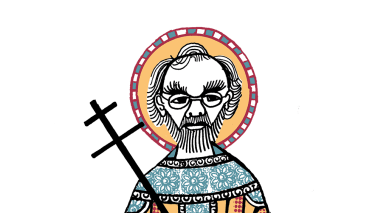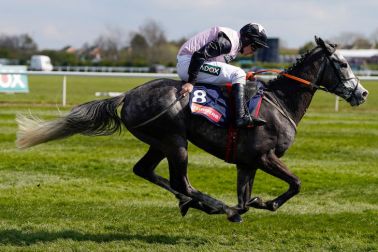It gets somewhat forgotten, Osaka. On the bamboo-and-tatami trail of Japanese sites, this ancient port, fort and conurbation at the very heart of Japan commonly misses out on foreign visitors: as everyone rushes from Tokyo to Kyoto, from sacred Mount Fuji to ancient Nara to haunted Hiroshima. For most overseas tourists, Osaka is just a fleeting stop on the Shinkansen high-speed trains – a glimpse of another sprawling Japanese city with bland, utilitarian housing.
The edgiest place in Osaka is about as dangerous as the Cotswolds
The Japanese themselves know otherwise. They flock to the city because they revere its pivotal history – Osaka was Japan’s archaic imperial capital, back in the 4th to 7th centuries – and they celebrate its epochal sites. For example: mighty, spiky, heavily restored but still grandly evocative Osaka Castle features throughout the recent, brilliant, Emmy-award-winning period TV drama Shogun. My advice: watch Shogun when you’re in Osaka; there’s a real buzz in visiting the cyclopean castle walls by day, then watching them come to life on TV at night.
The Japanese also know that Osaka is famous for its agreeably ebullient people (at least by reserved Japanese standards) and its scrumptiously diverse food. More forward-looking Japanese will likely be aware that the city is the site of the upcoming Expo 2025 – a focus for the world, and another reason to visit soon. And a smaller number might have an intimation that Osaka boasts one of the world’s weirdest red-light districts. Which is where I am now.
It’s called Tobita-shinchi, it’s in a once run-down corner of Osaka previously occupied by day-labourers – a.k.a. Burakumin: denizens of the lowest rung of the Japanese caste system (yes, Japan had a discriminatory caste system). The origins of the Burakumin are obscure; some geneticists believe they are direct descendants of Japan’s indigenous inhabitants, the animist, hunter-gathering Jomon, who came over from Siberia in about 12,000 BC. The rest of the Japanese followed, from Korea, 11 centuries later.
Whatever their particular origins, many of the Burakumin have vacated these streets, leaving behind pretty lanes of two-storey houses, with no walls on the front of the ground floors that face the road. This turns the ground floors of the houses into mammoth TV sets breaking the fourth wall, and inside each TV set there is a ‘madam’ who generally sits on the front rug looking bored as she scrolls TikTok.
Behind her there is usually a pillow or futon on which is seated one young Japanese girl, in hotpants, kimono or bikini. The girls are presented with exquisite care, like those perfect singular peaches you can buy as gifts in high-end Japanese department stores.
As we gaze from a properly respectful distance, my guide – a Bristolian punk rocker name of Russ – explains how it works. ‘Prostitution is illegal, so theoretically these are’, he shrugs amiably, ‘cake shops. You buy a cake and then the customer goes up to the second floor and you know, you have your cake.’
‘And eat it?’
Russ smiles politely, like he has heard this joke eight billion times. He also looks around, nervily, telling me that this is the edgiest place in Osaka. Now it’s my turn to laugh; the ‘edgiest place in Osaka’ is about as dangerous as the Cotswolds. If you’re unlucky that 10,000 Yen note you drop might not be returned. The lack of crime in Japan is a marvel – and a reason to visit, all by itself.
As a virtuous Spectator writer, I now make my excuses and leave the ‘edgy’ red-light district, though not without a sudden yearning for a slice of Battenberg. All at once we have passed into an entirely different neighbourhood: Shinsekai. It’s a 1920s nightlife zone, vaguely modelled on a garish fever dream of New York and Paris, that has been recently reborn as a loud, vivid, crowded entertainment quarter, complete with retro pachinko bars, retro funfair shooting galleries, superb octopus dumplings (takoyaki), a fake Eiffel Tower (which you can abseil), yummy beef offal noodles (doteyaki), mysterious izakayas (intimate Japanese gastropubs), and quite serious Shinto shrines where they worship a ‘good luck’ cartoon mascot-deity – Biliken – invented by an American art teacher, Florence Pretz, in 1908.
That is to say, Shinsekai is brilliantly weird. And really good value. The yen is so weak you can feast, with booze, for £15. The weirdness somehow intensifies as Russ guides me to our last stop of the tour. It’s a nearby park, next to the zoo, with magnificent nocturnal views of Osaka’s surrounding skyscrapers. Here we find some peculiar hillocks: they are ‘keyhole tombs’ from the kofun era, of the 3rd to 6th centuries. These tombs in central Osaka probably protect the graves of serious warlords, complete with the skeletons of their sacrificed concubines (early Shinto was bloodthirsty).
If such ancient history excites you, on the outskirts of Osaka you can find the Unesco-listed Daisen tombs – perhaps the most famous examples of these keyhole tombs in all Japan. Emperor Nintoku, from the 4th century, is believed to sleep away eternity in the Daisen tumuli, dreaming of his great great grrrrrreat grandmother, Amaterasu, the Shinto goddess of the sun.
Indeed, another advantage of Osaka is this centrality and access: it makes a splendid base – using Japan’s impeccable, punctual train system – for visiting Kyoto (an hour away), or Kobe (the beef!) or even Tokyo (two hours odd). Me, I head east for 90 minutes towards the Pacific, to go see the celebrated Ise Shrine, possibly the most sacred spot in all of Japan. I am obsessed with the idea the Japanese imperial family are descended from a sun goddess who liked to hide in caves, and Ise is the centre of this national Shinto mythology. I mean: who knows? It turns out Ise certainly has an ambience – and also great oyster bars.
On my last night I go wandering, as you must, around Dotonbori. This is the beating, sexy, romantic, super-energetic heart of Osaka, a sometimes ugly city, it becomes stunningly beautiful at night. All the concrete apartment blocks and unburied cable lines are made invisible by darkness. Instead, you see dazzling towers, malls, and plazas of glorious neon, flashing and glamorous. These lights are reflected in canals, glass, and steel, and they shine in the eyes of a hundred thousand Japanese kids, lovers, tourists, and oldies, munching magnificent street food, buy specially flavoured KitKats, and seeking out impossibly obscure wagyu beef parlours on the 37th floors of sparkling skyscrapers.
Trust the Japanese to know Japan: Osaka is a delight, a wonder, a bargain, a TV star, and the forthcoming site of Expo 2025. It’s certainly not just a Shinkansen stop.
InsideJapan (www.insidejapantours.com) can include a stay in Osaka in any self-guided cultural adventure. Their 14-night Best of Japan trip costs from £2,390pp (excluding international flights).
Sean Thomas flew with Korean Air (www.koreanair.com), which offers daily flights from London to Osaka via Seoul, with economy-class fares from £982pp.
This article is free to read
To unlock more articles, subscribe to get 3 months of unlimited access for just $5








Comments
Join the debate for just £1 a month
Be part of the conversation with other Spectator readers by getting your first three months for £3.
UNLOCK ACCESS Just £1 a monthAlready a subscriber? Log in